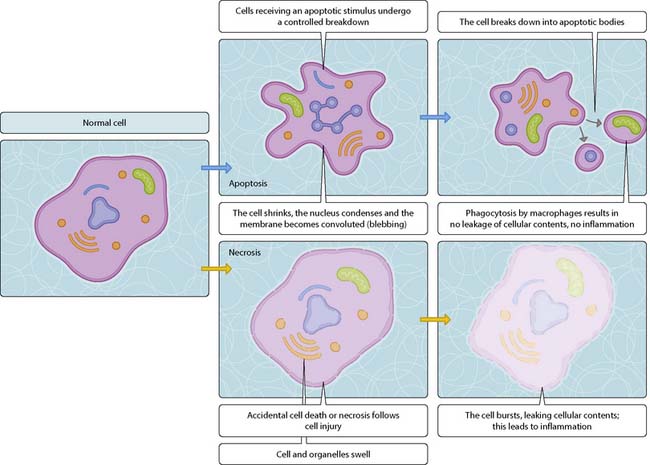49 Apoptosis
Necrosis and apoptosis
Two types of cell death can be distinguished: necrosis and apoptosis (Fig. 3.49.1). ‘Accidental’ cell death or necrosis occurs after severe and sudden injury. It is characterized by the swelling of organelles and a breakdown of the integrity of the plasma membrane, which results in the leakage of cellular contents and an inflammatory response. Programmed cell death or apoptosis occurs in response to physiological triggers in development (tissue remodelling), defence, homeostasis and ageing. Apoptotic cells initially shrink; the cytoskeleton and nuclear envelope break down and the cells lose microvilli and cell junctions. Organelles maintain their structure but the plasma membrane becomes highly convoluted and the cell breaks down into small apoptotic bodies, which are quickly phagocytosed by macrophages. This occurs without leakage of cellular constituents and, hence, without an inflammatory response. Apoptosis is often accompanied by a characteristic condensation and fragmentation of chromatin by endogenous endonuclease activity between centrosomes.








